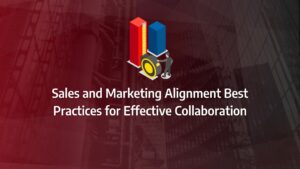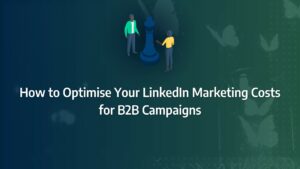Mastering sales lead qualification is crucial for any sales team looking to boost conversion rates and streamline their sales processes. Yet, many struggle with identifying which leads are worth pursuing. What if you could consistently qualify high-quality leads and focus your efforts on the prospects most likely to convert? In this guide, we’ll explore proven strategies and frameworks like BANT and CHAMP, along with cutting-edge tools that will transform your approach to lead qualification. By the end, you’ll have a clear roadmap to refine your sales process, driving better results and making your sales efforts more efficient.
- Implement structured frameworks like BANT and CHAMP to consistently identify high-quality leads, ensuring that your sales team focuses on the most promising prospects.
- Integrate CRM systems and AI-driven tools to automate and enhance your lead qualification process, saving time and improving accuracy.
- Align marketing and sales teams by establishing clear, consistent criteria for lead qualification, fostering collaboration and improving overall sales efficiency.
- Regularly review and update your lead qualification criteria using data-driven insights to stay responsive to market changes and customer behaviours.
- Tailor your lead qualification strategies to industry-specific factors, ensuring that your approach is customised to meet the unique needs of your business sector.
Defining a Sales-Qualified Lead
A sales-qualified lead (SQL) represents a prospect with a high likelihood of converting into a customer. Unlike other types of leads, an SQL has demonstrated a clear intent to purchase and has met specific lead qualification criteria, indicating they are a strong fit for your product or service. While these criteria can vary depending on your organisation’s size and offerings, a sales-qualified lead typically:
- Has a distinct need for your product or service.
- Has shown active interest in your company, product, or service.
- Possesses the budget necessary to make a purchase.
An SQL stands as the most valuable lead a salesperson can engage with. While it doesn’t guarantee a sale, the chances of conversion are significantly higher compared to other types, such as sales-accepted leads (SALs), marketing-qualified leads (MQLs), or cold leads.
Distinguishing Between SAL and SQL
Sales-accepted leads (SALs) are often underappreciated, yet they play a crucial role in the sales qualification process. Ignoring this category can be detrimental, as SALs bridge the communication gap between marketing and sales, serving as the precursor to a fully qualified SQL.
SALs are those leads that your sales team formally accepts from the marketing department for further scrutiny. Rather than simply passing these leads on without any formal procedure, it is more effective to establish a structured acceptance process. This approach offers several critical benefits:
- Preventing Lead Loss: By identifying SALs, you reduce the risk of promising leads slipping through the cracks.
- Identifying Lead Issues: This process ensures alignment between your sales and marketing teams, allowing for the identification and correction of any discrepancies in lead quality.
- Establishing Accountability: Formal acceptance provides sales representatives with a concrete deadline—ideally within 24 hours—for following up with these leads.
- Revamping or Discarding Leads: Any leads not accepted can be immediately returned to marketing for refinement or discarded, ensuring that only high-potential leads move forward in the sales qualification process.
Benefits of SQL in the Sales Qualification Process
Streamlining the Lead Generation Process
Streamlining the lead generation process is essential for making your sales efforts more efficient and effective. Lead qualification, particularly when focused on sales lead qualification, allows you to prioritise your efforts, ensuring that you focus on the most promising leads. By evaluating each lead’s level of interest and fit for your product or service, you minimise time spent on leads unlikely to convert. This approach not only optimises resource allocation but also enhances the customer experience by delivering the right message, at the right time, from the right person.
Moreover, a streamlined sales qualification process offers deeper insights into your sales funnel, enabling you to make informed decisions and adjust strategies as necessary. Ultimately, this approach allows your team to achieve superior results with greater efficiency.
Saving Time and Increasing Efficiency
The ability to save time and increase efficiency is one of the primary benefits of a well-structured sales qualification process. By focusing on the most likely-to-convert leads, you reduce the time wasted on unproductive prospects, allowing your team to close deals more swiftly and effectively. This process also helps you manage resources more wisely, ensuring that every opportunity is maximised to its full potential.
In essence, the sales qualification process is about working smarter, not harder. By prioritising the right leads and streamlining the lead qualification process, you can significantly boost your sales outcomes, enhancing both time management and overall efficiency.
What Matters Most?
Tailoring your qualification questions to align with their specific challenges helps identify high-potential leads effectively. Developing a clear definition of what constitutes a qualified lead enhances consistency in the sales process, fostering better alignment between sales and marketing efforts. Additionally, analysing the attributes of your best customers allows you to create detailed profiles that guide your identification of promising leads.Get In Touch
What criteria are used to qualify sales leads?
Understanding Common Lead Qualification Criteria
Establishing a robust sales qualification process begins with clearly defining the essential questions that must be posed and the responses required for a lead to progress through the sales funnel. Only those leads who satisfactorily meet these lead qualification criteria should be considered for further engagement in the sales process.
Consider the following lead qualification checklist, which might be employed by a sales representative at a solar panel company:
- Budget: How much capital have you allocated for solar panels?
- Decision-Making Authority: Are you the ultimate decision-maker? If not, can we involve the relevant person in our next discussion?
- Needs Assessment: What motivates your interest in solar panels, and how do you anticipate they will benefit you?
- Timeline: Assuming you find our proposal appealing, when would you be ready to proceed?
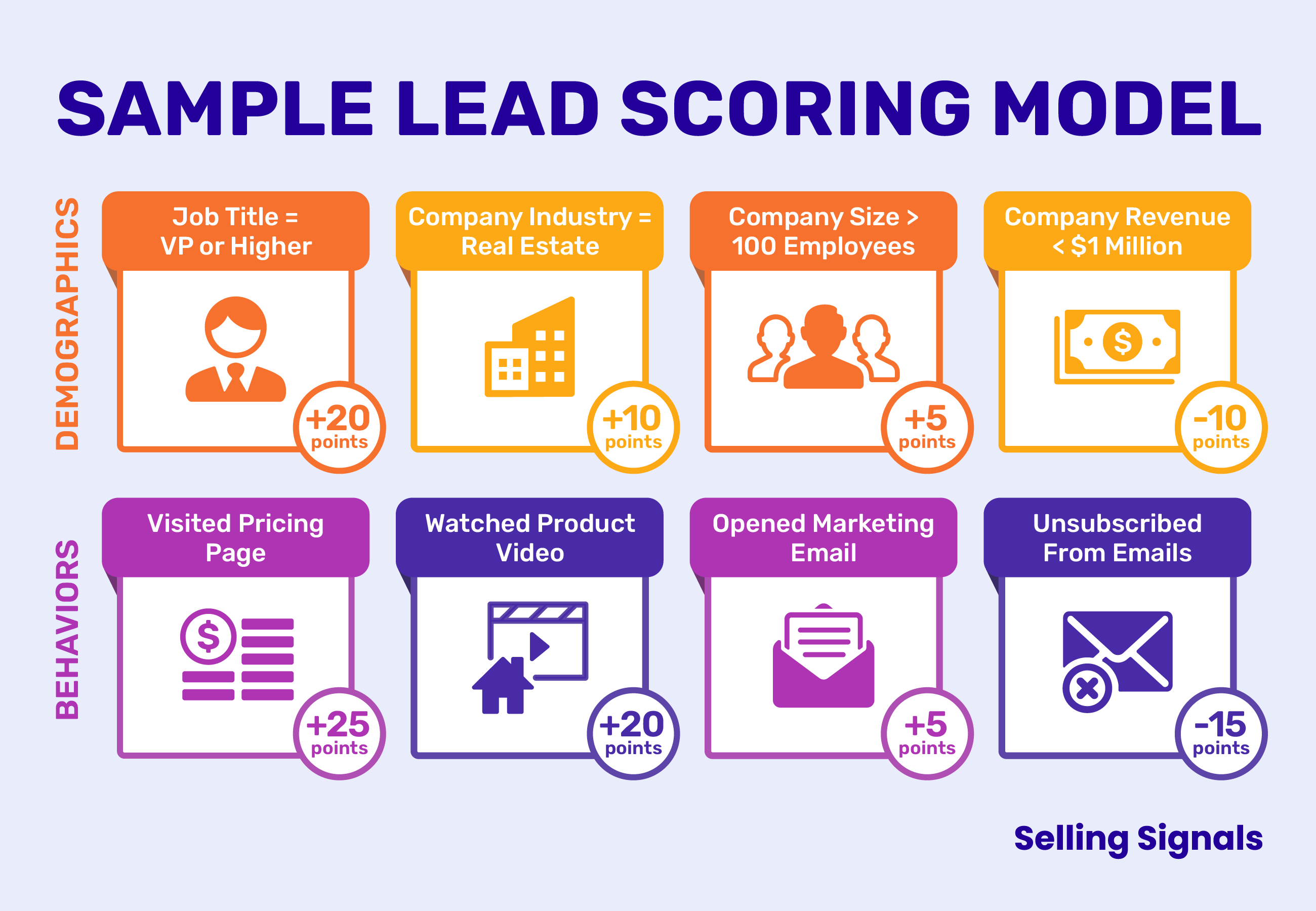
This checklist aligns with the BANT framework, which focuses on four critical areas: Budget, Authority, Needs, and Timeline. However, BANT is just one of several effective lead qualification strategies. Other prominent frameworks include:
- MEDDIC: Metrics, Economic Buyer, Decision Criteria, Decision Process, Identify Pain, and Champion.
- CHAMP: Challenges, Authority, Money, and Priority.
- SPIN: Situation, Problem, Implication, and Need-Payoff.
Source: Annuitas Group
Exploring Levels of Sales Qualification
As your sales team gathers more information about a prospect, they can classify the lead within one of three levels of sales qualification. Understanding these levels is crucial to effectively qualifying a sales lead and refining your sales qualification process.
Organisation-Level Qualification: At the base of this hierarchy is the organisation-level qualification. Prospects at this stage meet your company’s basic requirements and appear to be promising potential customers based on established buyer personas.
Most likely, you already incorporate this level of qualification into your sales cycle. During initial discovery calls, your representatives should enquire about fundamental factors such as company size, industry, and other key buyer data points. For instance, if your company only services specific geographic areas, it’s essential to confirm that the prospect operates within these boundaries. Similarly, if your product is an add-on for a particular software, ensure the prospect is already using that software.
Opportunity-Level Qualification: The next tier is opportunity-level qualification, where you’ve verified that the potential customer aligns with your sales objectives and has a genuine need for your offering. While some of this information may be gathered during the discovery phase, much of it will become apparent as you advance further in the sales process.
At this stage, the sales representative’s goal is to uncover the specific challenges the prospect wishes to address, the research they have conducted on competing products, and how they plan to implement your solution. The aim here is to confirm that there is a mutually beneficial fit between the prospect’s needs and your solution.
Stakeholder-Level Qualification: Stakeholder-level qualification represents the most advanced and critical stage. A lead at this level not only meets all previously discussed lead qualification criteria but also possesses the authority to make a purchasing decision.
If your sales representative has established contact with the ultimate decision-maker, such as an economic buyer or another influential stakeholder, you have a stakeholder-level qualified lead. However, it’s important to recognise that your sales team may not always gain direct access to the decision-maker immediately. In such cases, engaging and persuading gatekeepers becomes vital. It is also essential to assess whether the lead should be disqualified if access to the decision-maker proves challenging.
The Step-by-Step Method for Effective Sales Lead Qualification
Creating an effective lead qualification process is crucial for optimising your sales funnel and ensuring that your efforts are focused on the most promising prospects. The process can be broken down into three fundamental steps:
Crafting the Ideal Customer Profile
An Ideal Customer Profile (ICP) is a detailed outline of the key attributes that define your most successful customers. According to HubSpot, an ICP is essentially “a checklist of the most basic attributes someone needs to have to be successful as your customer.” This profile is typically developed through close collaboration between your marketing and sales teams to ensure alignment on what constitutes a qualified lead.
Typically, your ICP will include around five or six key attributes, though this number can vary depending on what your marketing and sales teams agree upon.
Developing a precise ICP is instrumental in targeting the right audience and generating more qualified leads. It also serves as a crucial tool in harmonising your marketing and sales efforts, reducing friction by creating a shared understanding of what constitutes a qualified lead.
Measuring Sales Readiness
Beyond identifying the right fit for your product or service, it’s essential to gauge a prospect’s readiness to engage with your sales team. A lead might perfectly align with your ICP, but if they are not yet ready to engage, pushing them prematurely could prove counterproductive.
Sales readiness is assessed by tracking specific actions that indicate a prospect’s preparedness to advance in the sales funnel. These actions might include interactions with your website, engagement with email campaigns, participation in social media, or attendance at online and in-person events.
By establishing a sales readiness framework, you can ensure that your sales team approaches leads at the optimal moment, enhancing the likelihood of a positive outcome and preventing the misstep of contacting them too soon.
To delve deeper into this topic, refer to our blog article on how to measure sales readiness in your online leads.
Constructing the Lead Qualification Matrix
Once your ICP is clearly defined and you’ve established the necessary sales readiness actions, the next step is to integrate these frameworks into a cohesive lead qualification matrix.
This matrix will help you categorise leads into good-fit and bad-fit categories by cross-referencing their attributes against your established criteria.
Steps to Build Your Lead Qualification Matrix:
- Identify Good-Fit and Bad-Fit Attributes: Use your ICP to determine which attributes signify a strong prospect and which indicate a poor match.
- Determine the Cut-Off: How many criteria need to be met for a lead to be classified as a good fit? If you’re unsure, consult with experienced members of your sales team to gain insights into the criteria they use for swift and effective qualification.
- Collaborate and Refine: Use initial data and ongoing collaboration with your sales team to fine-tune these criteria over time, ensuring your lead qualification process remains effective as market conditions evolve.
How can sales teams effectively qualify leads?
Implementing lead qualification frameworks is crucial to creating a structured and consistent approach to your sales qualification process. These frameworks assess key factors such as pain points, budget, authority, and customer needs, enabling your team to qualify leads more quickly and with greater accuracy.
The beauty of these frameworks lies in their adaptability. Each can be tailored to fit the unique objectives and sales processes of your organisation, ensuring that your sales lead qualification is both efficient and effective.
BANT Framework
The BANT framework, a long-standing method in sales lead qualification, focuses on four key aspects: Budget, Authority, Need, and Timeline. This approach is particularly effective in B2B sales environments where it’s critical to quickly assess whether a lead has the financial resources, decision-making power, pertinent needs, and an appropriate timeframe to make a purchase. A lead is deemed qualified when they satisfy at least three of these criteria.
BANT is especially beneficial for organisations needing precision in evaluating time and resource investments without engaging in extensive long-term relationship-building from the outset. By efficiently filtering out leads that do not meet the necessary criteria, BANT can significantly shorten the sales cycle. Although it may be considered somewhat traditional, its straightforwardness makes it a reliable and easily applicable framework.
Nevertheless, BANT has faced criticism for being overly focused on the seller’s perspective and potentially oversimplifying the sales qualification process. This can result in prematurely dismissing leads that might have been valuable customers in the future.
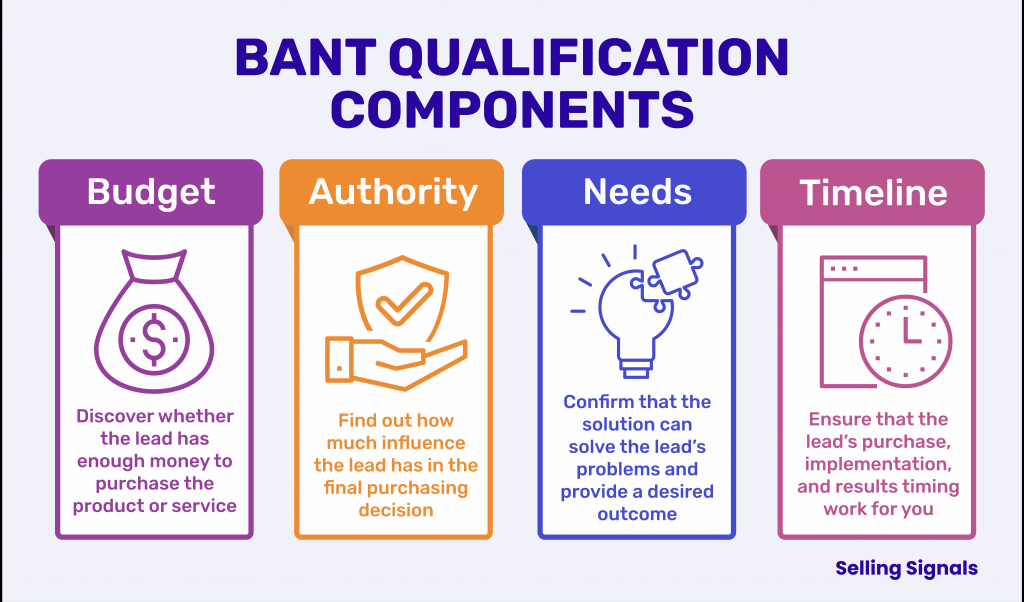
Source: Marketing Sherpa
MEDDIC Framework
The MEDDIC framework takes a more detailed approach, examining how well your solution aligns with a lead’s key performance indicators (KPIs), decision-making processes, and specific pain points. MEDDIC is designed to uncover the essential elements that drive a purchasing decision, ensuring that your leads are a strong match for your offering.
MEDDIC stands for Metrics, Economic Buyer, Decision Criteria, Decision Process, Identify Pain, and Champion. By employing MEDDIC-based questions throughout the sales funnel, you can gain a thorough understanding of your prospects’ needs and expectations, and your capability to meet them effectively.
This framework is particularly well-suited for businesses with lengthy sales cycles, such as those in B2B or SaaS sectors, where it’s crucial to understand intricate customer challenges. However, the complexity of MEDDIC necessitates a deep understanding of your ideal customer profile and requires rigorous management of customer data, typically through a CRM system.
ChAMP Framework
ChAMP, representing Challenges, Authority, Money, and Priority, places a significant emphasis on identifying your prospects’ challenges, which can then be transformed into opportunities by your sales team. By first determining the most critical issues your leads are facing, ChAMP helps you assess whether they are a good fit for your solution and how best to customise your sales approach.
This framework ensures that you are engaging with the right decision-makers (Authority), evaluating the financial feasibility (Money), and understanding how the prospect prioritises your solution (Priority). ChAMP is a versatile approach that suits both small and large organisations, providing a streamlined method for sales qualification while yielding valuable insights into the decision-making process.
However, the simplicity of ChAMP can sometimes lead to the neglect of other important factors, such as the specific timeframes and the broader decision-making process, which are crucial for a comprehensive sales qualification.
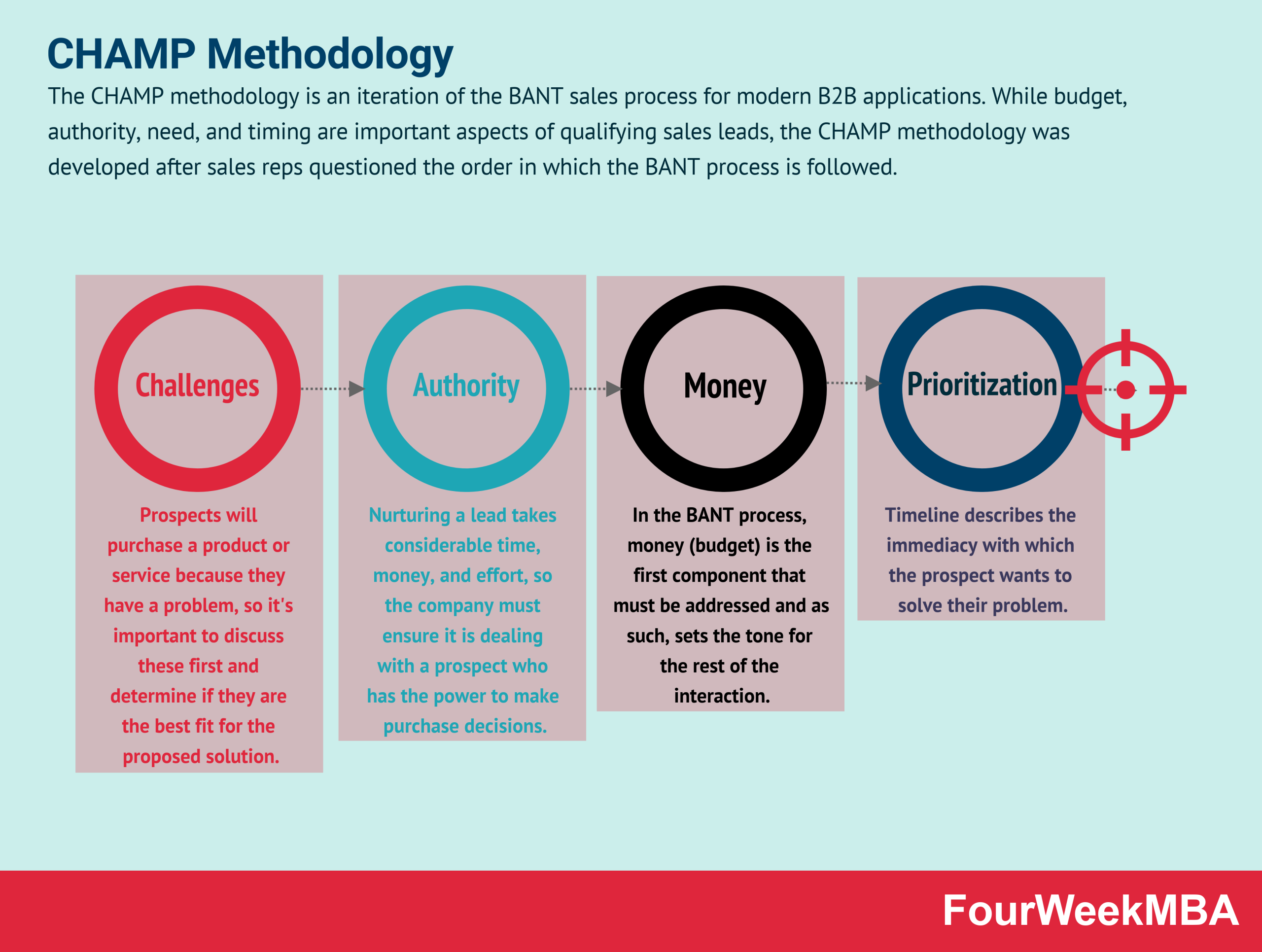
FAINT Framework
FAINT offers a sophisticated approach to sales qualification, particularly in scenarios where purchases are unplanned and there is no pre-set budget. The FAINT framework evaluates leads based on available Funds (not just budget), Authority, Interest in your solution, Need for your solution, and the Timeframe for implementation.
FAINT is particularly advantageous in situations where your leads have considerable financial resources, frequently engage in unplanned purchases, and are not bound by rigid budgetary limits. This framework is also highly compatible with longer B2B sales cycles and can be seamlessly integrated with automation tools, such as chatbots.
However, the FAINT framework’s emphasis on available funds and interest could potentially result in wasted efforts if these factors are prioritised before confirming a genuine need. Additionally, there is a risk of disregarding leads with lower funds, even when your solution might otherwise be a perfect fit.
Our Tactical Recommendations
From our experience, implementing a lead scoring system that combines qualitative and quantitative metrics allows for more effective prioritisation of leads based on their likelihood to convert. Moreover, using open-ended questions during qualification calls uncovers deeper insights into leads’ needs, timelines, and motivations, providing your team with the information needed to engage more effectively and drive conversions.Get In Touch
How to Stop Wasting Time on Sales Lead Qualification
Efficient sales lead qualification is crucial for maximising your sales team’s productivity and ensuring that time is invested in leads with the highest potential for conversion. By honing in on the following strategies, you can refine your sales qualification process, reduce wasted efforts, and improve overall accuracy.
1. Assessing Purchasing Power
In many organisations, purchasing decisions are made by committees comprising members from different departments. It’s vital to identify the decision-making hierarchy early in the sales qualification process. Understanding who has the authority to approve purchases ensures that your communication is directed at the right stakeholders. Additionally, it’s essential to stay updated on any changes in the corporate structure to maintain the relevance of your approach. By targeting the appropriate individuals, you enhance the efficiency of your sales lead qualification and increase the likelihood of success.
2. Demand Equals Action
A key question to ask during sales lead qualification is whether your product or service directly addresses the prospect’s business needs. Does the organisation have a specific pain point that your solution can resolve? Evaluating the lead’s genuine demand for your offering is crucial to determining whether they are a good fit. Moreover, understanding why your solution is superior to alternatives in the market can provide a competitive edge. When there’s strong alignment between the prospect’s needs and your solution, the chances of conversion significantly improve.
3. Value Over Cost
While cost is often a primary concern for buyers, leads who recognise the value of your solution are less likely to let price be a deal-breaker. To shift the focus from cost to value, assist your prospects in building a compelling business case for your product or service. This can be achieved through free demonstrations, detailed case studies, product tours, and similar initiatives. Once you identify leads who respond positively to these efforts, concentrate on nurturing them further. By emphasising value, you can streamline the sales qualification process and move closer to closing the deal.
4. Establishing a Clear Timeline
After qualifying a lead based on purchasing power, demand, and value, it’s critical to establish a mutually agreed timeline for the purchase. Collaboratively developing this timeline and putting it in writing sets clear expectations and helps solidify the prospect’s intent to buy. A lead who is willing to commit to a specific timeline is more likely to progress through the sales funnel to a successful close.
5. Implementing Lead Scoring
Lead scoring is a powerful tool for automating and enhancing your sales qualification process. By assigning points to leads based on their behaviours and actions—such as engagement with your content, participation in demos, and responsiveness—you can quantify their level of interest and readiness to convert. This automated system helps your sales team focus on the leads most likely to result in a sale, ensuring that resources are allocated efficiently and effectively.



